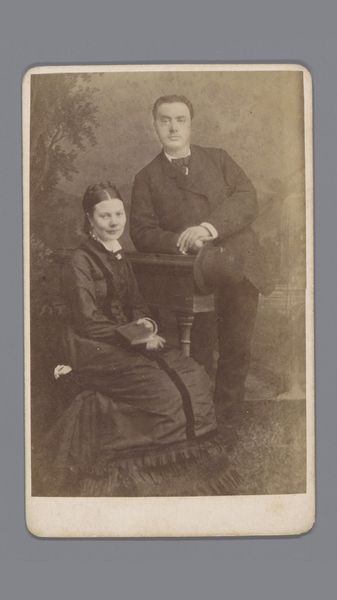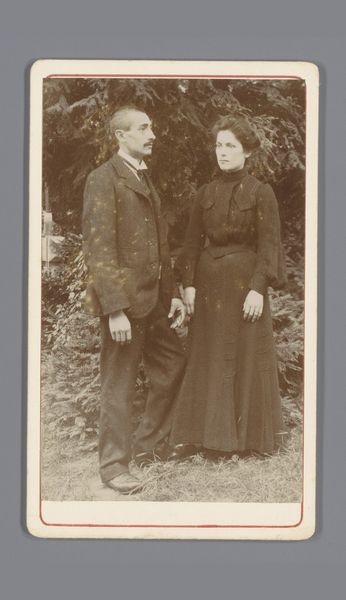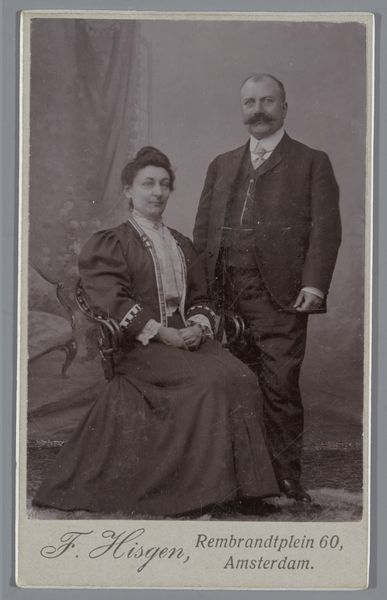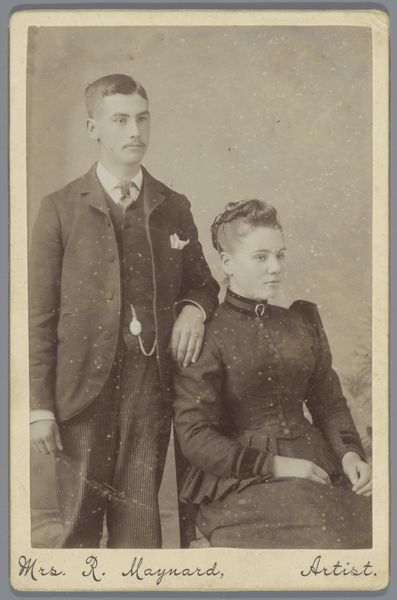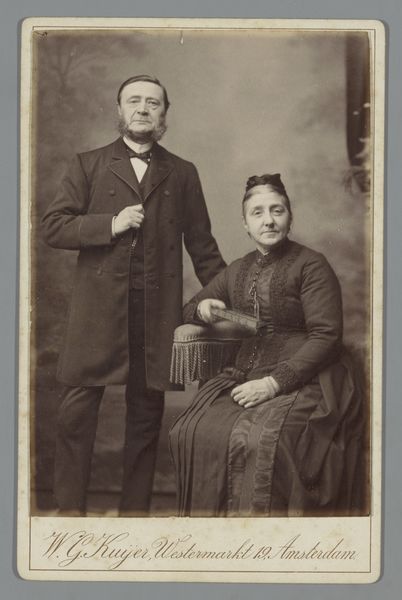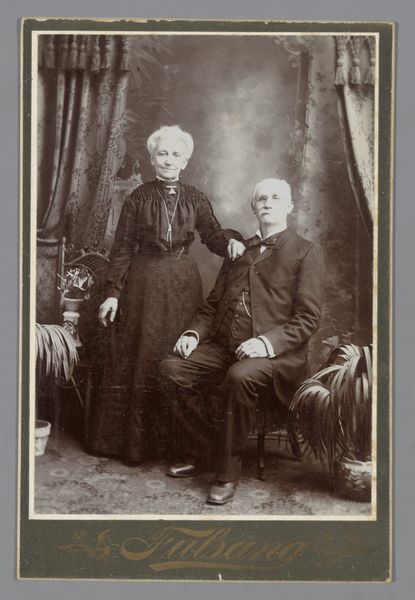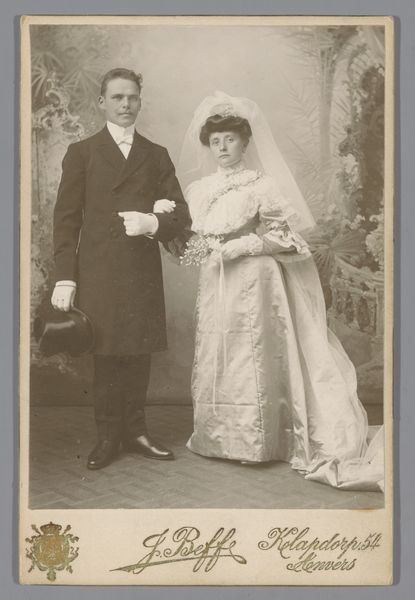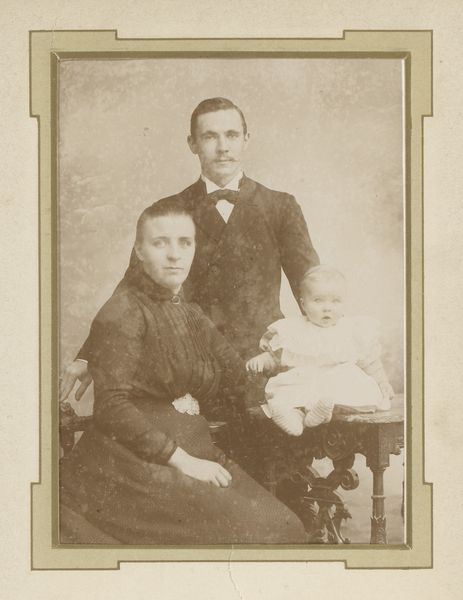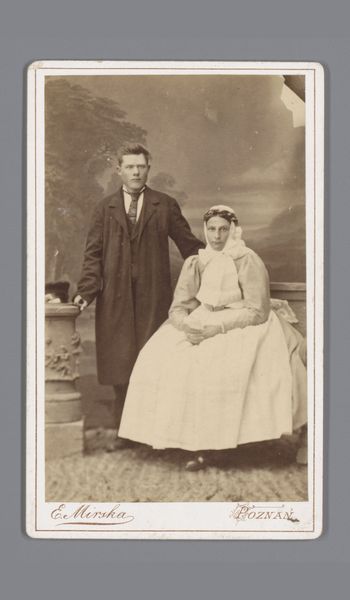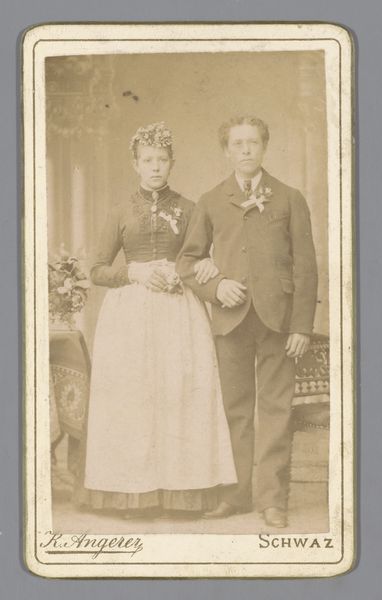
Dimensions: height 102 mm, width 63 mm
Copyright: Rijks Museum: Open Domain
Curator: Looking at this old photograph, I'm immediately struck by a sense of stillness, almost melancholy. There's a certain weightiness to the scene. What are your first impressions? Editor: Well, to me it feels incredibly intimate, like catching a private moment made public. This image, titled "Portret van een onbekende man en vrouw bij een tafel"—"Portrait of an Unknown Man and Woman at a Table"—and thought to be created sometime between 1897 and 1900 by Weijert Jan van Zanen. Curator: Intimate, yes, but also slightly stiff, wouldn’t you say? The formal attire, the careful composition, everything feels posed. The woman with what appears to be a book. Are they attempting some display of learning or wealth, perhaps? It’s like they're enacting a role rather than simply being. Editor: It's easy to read the staging as artifice, of course. In that era, photography was often about crafting an image. It’s less a snapshot than a performance, particularly when you think about the socio-political forces shaping identity in the 19th century and people aspiring to project something beyond their daily life, given the permanence of photographic documentation. This is about immortality as well as posterity! Curator: Precisely! There’s that sense of immortality captured. But does that carefully constructed image truly reflect their essence? I keep wondering about their story, their unspoken emotions… the unseen life. Is that romantic longing just in my head? The man looks so proper with his arm draped casually on the table...does it tell me anything about what they’re thinking and feeling? Editor: Well, perhaps we’re not meant to know their story completely. Part of the beauty, I think, is in the mystery. The "unknown man and woman"... It allows us to project our own narratives onto them, to see echoes of our own relationships and anxieties in their faces. Even the studio backdrop blurs reality, turning them into timeless figures. They become every couple, in a way. It is, as always, our construction. Curator: That's true. Perhaps their very anonymity is what gives them power, lets them be a mirror to our own lives and loves. It's not about knowing them, but recognizing ourselves. Editor: It strikes me as almost subversive. To have such a formal portrait, so clearly posed, and yet to retain this ambiguity… the fact of who they were is lost in the historical fog of the everyday. We can only grasp the faintest wisps. Curator: And isn’t that what art, and time, is all about? The layers of what is visible and what remains invisible? Thanks for highlighting what's so alluring and strange in this deceptively simple photograph.
Comments
No comments
Be the first to comment and join the conversation on the ultimate creative platform.
